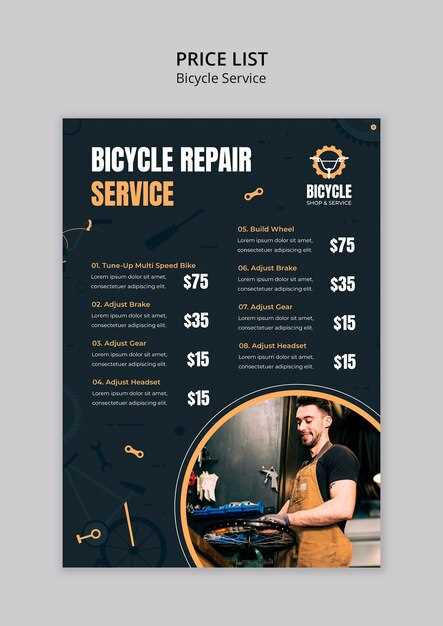

Every motorcycle owner knows that regular maintenance is crucial to ensure safety, performance, and longevity of their ride. A thorough understanding of your motorcycle’s needs is essential, as neglecting checks can lead to costly repairs and accidents. By following a structured maintenance schedule, riders can enhance their motorcycling experience while minimizing unexpected breakdowns.
This checklist serves as a guide to help every rider, from newbies to seasoned veterans, stay on top of their motorcycle’s upkeep. Regular maintenance not only improves the bike’s reliability but also fosters a sense of confidence on the road. With clear and systematic checks, you can enjoy every ride without the worry of mechanical failures.
As you become familiar with this checklist, remember that each motorcycle has its unique requirements. Always refer to your owner’s manual for specific guidelines related to your model. In this article, we will break down the essential maintenance tasks and checks that should be performed regularly, ensuring that you are well-prepared for any journey ahead.
Daily Pre-Ride Checks for Safe Riding
Before embarking on any journey, conducting a series of daily checks on your motorcycle is essential for a safe riding experience. These checks, although simple, can significantly enhance your safety on the road and prolong the lifespan of your motorcycle.
1. Tire Inspection: Examine both front and rear tires for proper inflation, tread wear, and any visible damage. Ensure that tire pressure meets the specifications outlined in your motorcycle’s manual. Regular checks of tire condition can prevent accidents caused by blowouts or poor grip.
2. Fluid Levels: Check the levels of essential fluids such as engine oil, coolant, brake fluid, and clutch fluid. Adequate fluid levels are vital for the optimal performance of your motorcycle. Regular monitoring can prevent engine failures and braking issues.
3. Lights and Signals: Test all lights, including headlights, brake lights, and turn signals. Confirm that they are functioning correctly and are bright enough to be seen during the day and night. Visibility is crucial for safe riding, especially in traffic conditions.
4. Brakes Check: Inspect the brake system for responsiveness. Ensure that the brake levers and pedals engage smoothly and that there are no strange noises when activated. Regular checks can prevent brake failure, which is critical for safe stopping.
5. Chain and Cables: Examine the motorcycle chain for proper tension and lubrication. Check all cables, including throttle and clutch cables, for wear and free movement. A well-maintained chain and cables provide smooth operation and enhance control.
6. General Condition: Perform a walk-around inspection of your motorcycle. Look for any loose parts, leaks, or signs of wear. Ensuring that everything is secure will help you avoid problems while riding.
Incorporating these regular checks into your pre-ride routine is a vital step toward achieving a safe and enjoyable riding experience. By committing to daily inspections, you enhance your confidence and safety on the road.
Weekly Fluid and Tire Inspections

Regular maintenance of your motorcycle is essential for ensuring optimal performance and safety. One of the most critical aspects of this maintenance is the weekly inspection of fluids and tires. This routine check-up allows you to identify potential issues before they escalate into serious problems.
Start with the fluid levels. Check the engine oil, coolant, brake fluid, and clutch fluid to ensure they are at the proper levels. Low fluid levels can lead to engine overheating, reduced braking efficiency, and poor clutch performance. If you notice any leaks or discoloration in your fluids, address these issues immediately to avoid further damage.
Next, turn your attention to the tires. Inspect them for proper tire pressure, which is crucial for maintaining handling and grip. Under-inflated tires can cause poor traction and increase tire wear, while over-inflated tires may lead to a harsher ride and reduced contact with the road. Use a reliable tire pressure gauge to check each tire’s pressure, and compare it against the manufacturer’s recommended settings.
In addition to pressure, examine the tread depth and overall condition of the tires. Look for any cracks, bulges, or foreign objects embedded in the tire. Insufficient tread depth can severely affect your motorcycle’s stability, especially in wet conditions. Replace worn-out tires promptly to ensure your safety on the road.
By dedicating time each week for fluid and tire inspections, you will not only prolong the life of your motorcycle but also enhance your riding experience through improved safety and performance. Taking proactive steps in maintenance is the key to a trouble-free journey.
Seasonal Maintenance Tasks for Longevity

Regular motorcycle maintenance is crucial for ensuring your ride remains reliable and performs at its best throughout the year. Each season brings specific checks that help prolong the lifespan of your motorcycle.
In the spring, perform a thorough inspection after the winter storage. Check your battery for charge and connections, as cold weather can affect its performance. Inspect the tires for wear and proper inflation, and don’t forget to lubricate the chain and check the tension. Clean and replace, if necessary, the air filter to ensure optimal airflow and performance.
Summer maintenance involves paying attention to the coolant and engine oil. Check the levels and replace them if they show significant signs of wear. Make sure to inspect all fluid levels–brakes, clutch, and transmission fluid–to prevent overheating during hot rides. Additionally, inspect the brakes and suspension for any wear or inconsistencies after extensive use.
As fall approaches, focus on your motorcycle’s electrical system. Inspect the wiring for any damage and clean all connections. Check the headlight and taillight bulbs to ensure visibility during shorter days. It’s also essential to lubricate cables and moving parts to prepare for potential moisture and dampness that accompanies winter.
Winterization tasks are critical if storing your motorcycle. Change the oil to remove contaminants and prevent corrosion. Use fuel stabilizers to keep the fuel system clean during downtime. Elevate your motorcycle on a stand to reduce tire flat spots and cover it with a breathable tarp to protect it from dust and moisture. Finally, ensure the battery is fully charged and disconnected to maintain its health during storage.
By adhering to seasonal maintenance checks, you not only enhance your motorcycle’s performance but also significantly extend its longevity, ensuring safe and enjoyable rides for years to come.
